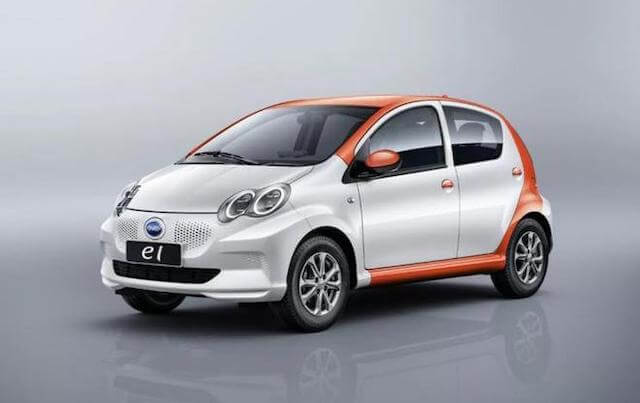
Consensus, offer, performance and ecosystem are four hurdles towards the take-off of pure EVs. China has ticked the first two and making great progress on the third.
When I worked in China a few years ago, I was fascinated by the power, scale, and speed of the changes in China’s auto market. Since moving to a global role and back to Europe, I still travel to China frequently to keep my finger on the pulse of the Chinese market.
From my recent observations and conversations with clients in China, I have a strong impression that China has entered the “Electric Vehicle for All” era, which is not yet a reality in other markets.
Whatever needs you to have for a vehicle, you can relatively easily find an EV model for it: premium, mainstream or entry models from JV and domestic brands; sedan, SUV, mini/compact cars, you name it.
This brings us to a framework to understand the four key hurdles on the path to an EV future.
Four hurdles to overcome for EV to take off
1. Consensus
It means all or most people understand that to achieve a better environment for human beings, such as cleaner air, EV plays an important role. Conceptually in China, most people have agreed that to improve the environment, the transition towards an EV future is an important part of the solution.
2. Offer
We need enough availability of car models for the majority of car buyers/users. Because if we want to attract enough supporters of an EV future, we need to ensure a large enough size of buyers/users can find an EV version of their ideal car model.
For a French man with four kids like me, I need a large enough MPV to drive my family around. But it’s not easy to find such an EV or hybrid model. The only full EV model available now in Europe that fits my functional need is the Tesla model X, a great model but the price tag is a little beyond my budget.
3. Performance
EV brands from China and other parts of the world are making promises. But to really take off, they need to deliver and meet consumers’ expectations on many aspects, such as range, power of engine, access and convenience of charging, etc. Many brands I saw at the Shanghai Auto Show were claiming their EV can run at least 400 kilometers.
This is a decent mileage to make people seriously consider buying a pure EV car because even if you are driving a gasoline car, you’ll have to stop anyway to rest or for some model stop to fill up every 400 kilometers.
To address the burden of long hours needed to reload fully an EV battery pack, I very much like NIO’s battery swapping station approach. If such battery stations can be built along highways and, it’s big AND, it’s built to fit with every brand not just for a single brand, then people will be even more assured of their EV’s range reliability.
4. Ecosystem
It’s similar to the battery swapping station network topic. For an EV future to materialize, many stakeholders need to join forces in the same direction and align for a common future. These stakeholders include auto brands, component suppliers, IT companies, electricity and power companies, research companies and institutes, government agencies, etc.
A great example is the Movin’On Lab ecosystem that brings together many actors of mobility, to explore the trends, innovate and influence the future of mobility.
Recently, I just shared some preview snapshots of our Mobility Futures report during Movin’On Lab summit in Montreal. Surveying 20,000 people across 31 cities, the study uncovered the political, economic, ecological, technological and socio-cultural factors that are profoundly changing mobility decisions in the major cities around the world.
In addition to identifying today’s patterns of mobility behavior, the project also evaluated acceptance towards new products, services, and interventions to project a 10-year vision of the urban mobility market, including city-level forecasting and scenario planning.
Likewise in China, China Mobile has already established China 5G Autonomous Driving Alliance, which has attracted Chinese automakers, universities, and research institutes, IT companies to join forces. It will be a powerful platform to boost the development of autonomous driving.
I am also aware that China Electric Vehicle Charging Infrastructure Promotion Alliance (under the leadership of China National Energy Administration) is working as a platform to push forward the access and convenience of charging EVs around China.
Various levels of governments are playing important roles in nurturing the ecosystem. Their regulations and incentives can effectively enforce alignment to push the deployment of EV cars. Take Norway as an example, where since 1990s government and private firms facilitated the import, the sell and the use of EV. Even though Norway is a small country compared to many others, it is now the third largest market for EV sales, right after China and the US.
To summarize, I think China has passed the first major hurdles and is making significant progress on others. We can expect the ecosystem to gradually take shape and accelerate the EV development in China.
Implications for auto brands
Given the status quo of EV cars in China, I think auto brands need to focus on the No.2 and No.3 hurdles mentioned here: offer and performances.
For consumers, it is good to have so many EV offers to wait to be chosen, but for EV brands, they are in a highly competitive and increasingly congested market segment. They really need to understand what consumers are looking for in an EV so they can come up with a differentiated and unique offer to win.
Auto brands also need to evaluate experiences and pain points of current EV customers/users to develop a better performing EV which can retain and win new customers in the future.
Also read: 80% of Chinese consumers’ unplanned shopping comes from social e-commerce
Author: Guillaume Saint, Global Automotive Lead, Kantar
This article was originally published on Kantar.com